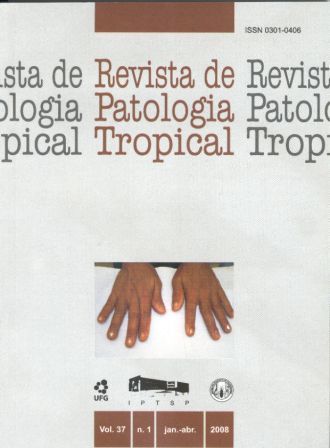Candida albicans and Candida tropicalis isolated from an HIV-positive patient suffering fingernail onychomycosis: resistance to fluconazole and itraconazole.
DOI:
https://doi.org/10.5216/rpt.v37i1.4032Keywords:
Onychomycosis, Candidiasis, Antifungal agents.Abstract
The present study analyzes a case of onychomycosis by Candida species with
resistance “in vitro” to fluconazole and itraconazole in a patient infected by the
human immunodeficiency virus (HIV). The patient presented partial dystrophic
onychomycosis with chronic paronychia and previous use of fluconazole for
treatment of oral candidiasis. Scales scraped from the fingernails demonstrated
hyaline yeasts with blastoconidia and pseudohyphae; and in culture, after growth:
two species of Candida that have been identified as Candida tropicalis and Candida
albicans. Antifungal susceptibility tests with 2 ATB® FUNGUS and method of
Disc diffusion for fluconazole were carried out. Both species presented resistance to fluconazole and itraconazole. The peculiarities of the various species of Candida
justify the need to identify yeast species, as well as the sensitivity profile to
antifungal agents in clinical use, to better therapeutic and minimize the exposure of
these patients to fungal dissemination.
Downloads
Downloads
Published
How to Cite
Issue
Section
License
The manuscript submission must be accompanied by a letter signed by all authors stating the full name and email address, confirming that the material has not been published or is under consideration for publication elsewhere, and agreeing to transfer copyright in all media and formats for Journal of Tropical Pathology. The authors will not be paid for published articles. They are solely responsible for the content of those articles, even if the Editor holds the right to adjust them to the norms of the journal.
The reviewers will not be paid for the peer review process.

